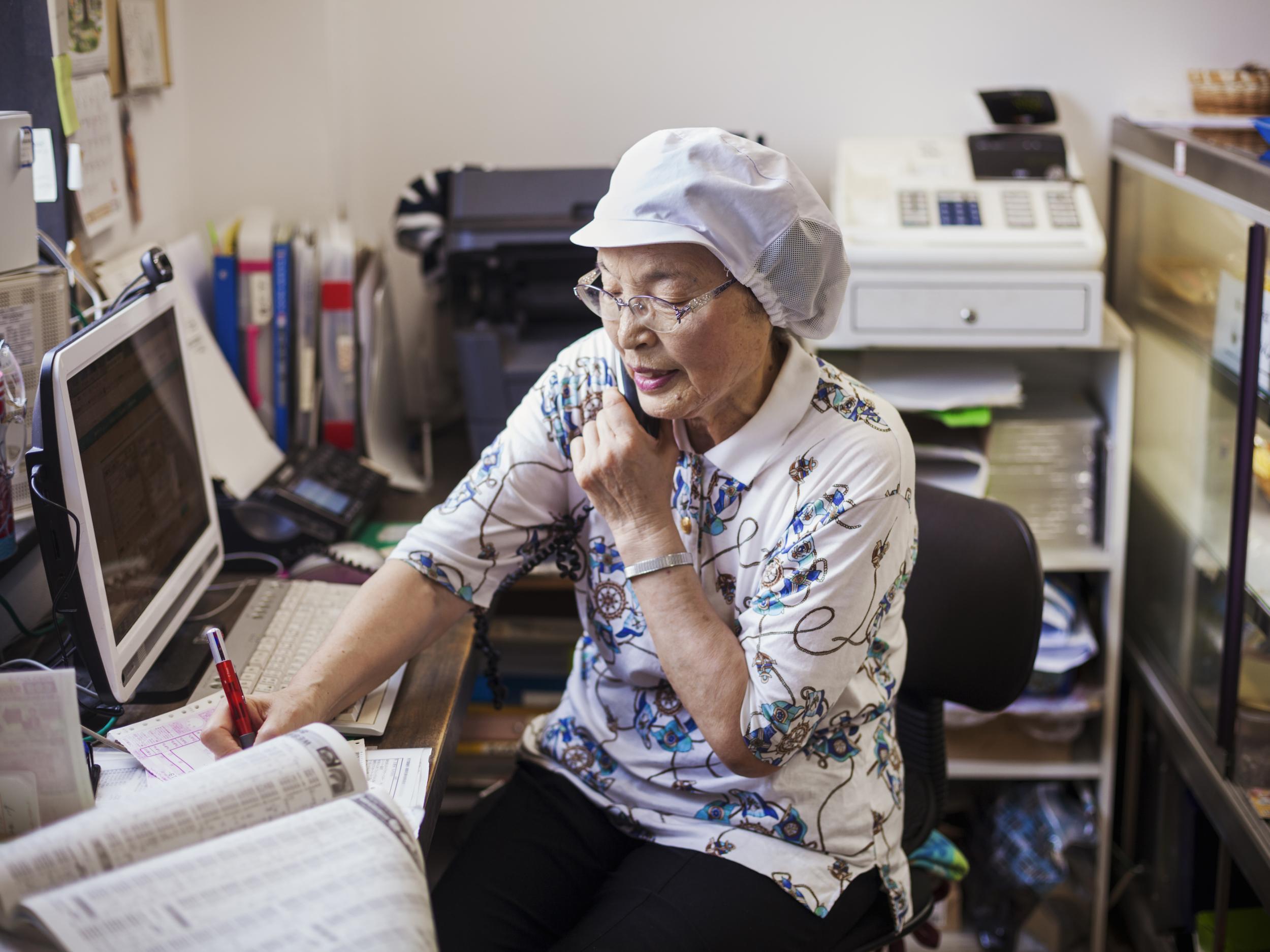Many Americans try retirement, then change their minds
Economists refer to this sort of employment U-turn as ‘unretirement’

Your support helps us to tell the story
From reproductive rights to climate change to Big Tech, The Independent is on the ground when the story is developing. Whether it's investigating the financials of Elon Musk's pro-Trump PAC or producing our latest documentary, 'The A Word', which shines a light on the American women fighting for reproductive rights, we know how important it is to parse out the facts from the messaging.
At such a critical moment in US history, we need reporters on the ground. Your donation allows us to keep sending journalists to speak to both sides of the story.
The Independent is trusted by Americans across the entire political spectrum. And unlike many other quality news outlets, we choose not to lock Americans out of our reporting and analysis with paywalls. We believe quality journalism should be available to everyone, paid for by those who can afford it.
Your support makes all the difference.Sue Ellen King had circled her retirement date on the calendar: 8 March 2015. She had worked as a critical care nurse and nursing educator at University of Florida Health in Jacksonville for 38 years; co-workers joked that she was there when the hospital’s foundation was laid, which happened to be true.
So the send-offs went on for days – parties in the units where she had worked, a dinner in her honour, gifts including a framed photo signed by colleagues. King felt ready.
She’d turned 66, her full social security retirement age. She had invested fully in the hospital’s 401(k) retirement savings plan and consulted with a financial adviser. She and her husband, who had already retired, had paid off the mortgage on their three-bedroom ranch. They took a week’s trip to Hilton Head, South Carolina, to celebrate their impending freedom.
But her retirement lasted just three months. “I’d done all the preparation, except to really think about what life was going to be like,” King says. Days spent organising recipes and photos, and lunching with friends, proved less engaging than expected.
So when her hand-picked replacement needed a maternity leave, King jumped at the chance to return for three months. Now back at work in a part-time position she designed for herself, she calls herself “a failed retiree”.
Economists refer to this sort of U-turn as “unretirement”. (In “partial retirement”, another variant, an employee cuts back to part-time status but doesn’t actually leave the workplace.) Unretirement is becoming more common, researchers report.
A 2010 analysis by Nicole Maestas, an economist at Harvard Medical School, found that more than a quarter of retirees later resumed working. A more recent survey, from RAND Corp, a nonprofit research firm, published in 2017, found almost 40 per cent of workers over 65 had previously, at some point, retired.
“We definitely see evidence that retirement is fluid,” says Kathleen Mullen, a RAND senior economist and co-author of its American Working Conditions Survey. “There’s less of the traditional schedule: work to a certain age, retire, see the world. We see people lengthening their careers.”

A Pew Research Centre analysis of data from the Bureau of Labour Statistics supports that observation. It reports that the proportion of Americans over age 65 who were employed, full-time or part-time, had climbed steadily from 12.8 per cent in 2000 to 18.8 per cent in 2016. More than half were working full-time.
Even more people might resume working if they could find attractive options. “We asked people over 50 who weren’t working, or looking for a job, whether they’d return if the right opportunity came along,” Mullen says. “About half said yes.”
Why go back to work? We hear endless warnings about Americans having failed to save enough, and the need for income does motivate some returning workers.
But Maestas, using longitudinal data from the national Health and Retirement Study, has found that the decision to resume working doesn’t usually stem from unexpected financial problems or health expenses.
“It looks like something people are doing intentionally, instead of an oh-my-God response: ‘I’m running out of money; I have to go back to work,’” she says. “It’s much more about a choice.”
Longer lives, better health and less physically taxing jobs than in previous generations help provide that choice, Maestas points out.
“You hear certain themes: a sense of purpose. Using your brain,” she says. “And another key component is social engagement.” Earning money, while welcomed, rarely proved the primary incentive.
Michelle Wallace, who lives in Broomfield, Colorado, learned about purpose over 20 frustrating months.
After decades in telecommunications, she says, she retired abruptly from a project management position in 2013, when her workplace turned chaotic and hostile.
She had saved enough to feel economically secure. But without a job, “I felt like I was free-floating, bobbing along on the ocean,” she says. “I felt very ungrounded.” Friends noticed her becoming more reclusive; her doctor increased her antidepressants.
In 2015, she took a part-time job with a small business that supports government researchers. Now 69, she has no interest in retiring again. “As long as somebody wants me, I have a lot to contribute,” she says.
Most retirees who returned to work told researchers they had long planned to re-enter the workforce.
But among those who expected to remain retired but then changed their minds, Maestas has identified a subgroup going through “burnout and recovery”.
“Some people have a lot of stress, pressure and physical demands” in their jobs, she notes. “Their interactions with people at work could be strained or hostile.” After a restorative break, they can find work that suits them better.

Thana Christian, a social worker in Oakland, California, felt crushed by her workload at a county child protective services agency. She retired at 63, because “the job was killing me”.
For 18 months, she gardened and biked, took pottery and quilting classes, felt lonely but figured she would adjust. Then a chance conversation at the local senior centre turned towards work. “It hit me like a thunderbolt, how much I missed social work,” she says. “That’s who I was.”
Online, Christian quickly learned that the Kaiser Permanente Oakland Medical Centre needed on-call social workers, giving them the flexibility to set their own hours. Once hired, she tried various combinations and settled on working Mondays and Fridays.
“Two days a week doesn’t feel like work,” she said, now 66. “It’s an addition to my life.”
Researchers note that older workers have different needs. “Younger workers need the paycheck,” Mullen says. “Older jobseekers look for more autonomy, control over the pace of work. They’re less concerned about benefits. They can think about broader things, like whether the work is meaningful and stimulating.”
Of course, workplaces present challenges, too.
Nearly as many older workers face repetitive tasks or physical demands as younger ones, the RAND survey found, and they report slightly less support from bosses and cooperation from colleagues.
Class and education matter, too. “People with less education are in more taxing jobs,” Maestas says.
In the RAND survey, 60 per cent of older college graduates who had retired said they would be interested in returning to the workforce for the right job. Just 40 per cent of those without degrees felt the same way.
Still, two-thirds of older workers report satisfaction in work well done, a majority that includes King.
Now 69, she puts on her scrubs twice a week, providing nursing education on the night shift from 7pm until 2am. She feels needed, but not overwhelmed.
“It’s perfect,” she says. “I get the ego reinforcement of having people appreciate what I do. And I appreciate the downtime – now that it’s not all downtime.”
© New York Times
Join our commenting forum
Join thought-provoking conversations, follow other Independent readers and see their replies
Comments